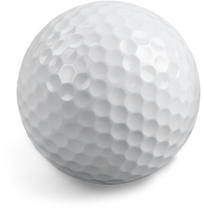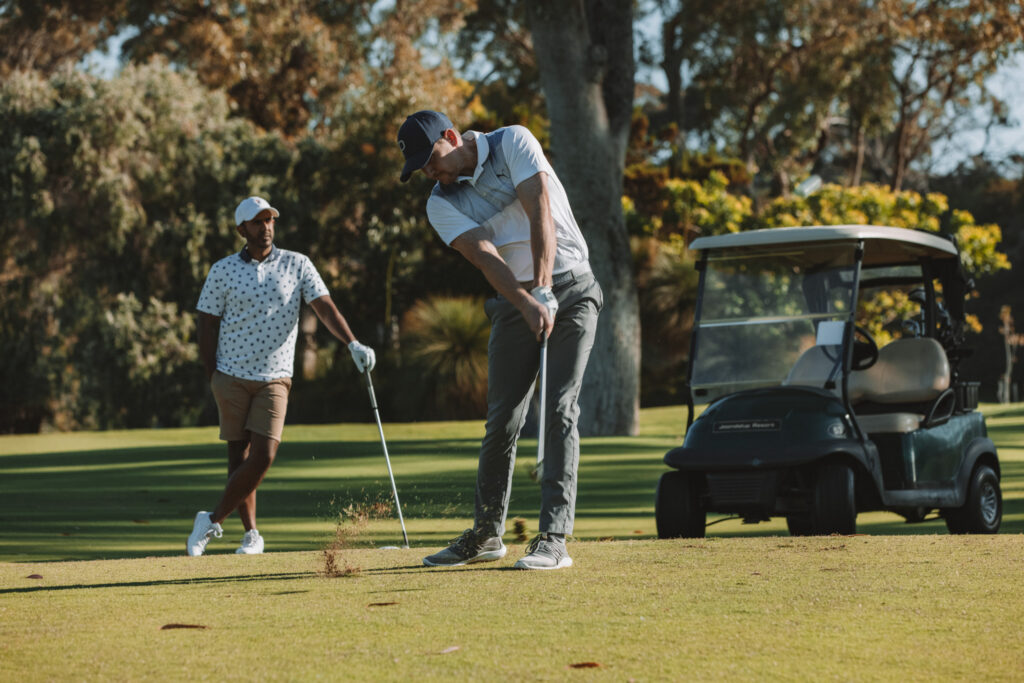How to Stop Digging and Start Gliding: The Secret to Better Chip Shots
If there’s one shot that can mess up a round, it’s the chunked chip. Every golfer knows that sinking feeling, you’re greenside in two, thinking “easy up-and-down,” and the next thing you know, the club digs, the ball goes nowhere, and you’re suddenly scrambling just to make bogey.
The truth is, most amateurs don’t struggle around the greens because they lack talent or finesse. They struggle because they dig when they should glide. Once you learn to let the club work the way it was designed, your chipping becomes simpler, more predictable, and far less stressful.
This article will help you understand why digging happens, how to use the club’s bounce, and what to change in your setup and motion so you can start sliding the club through the turf with confidence.
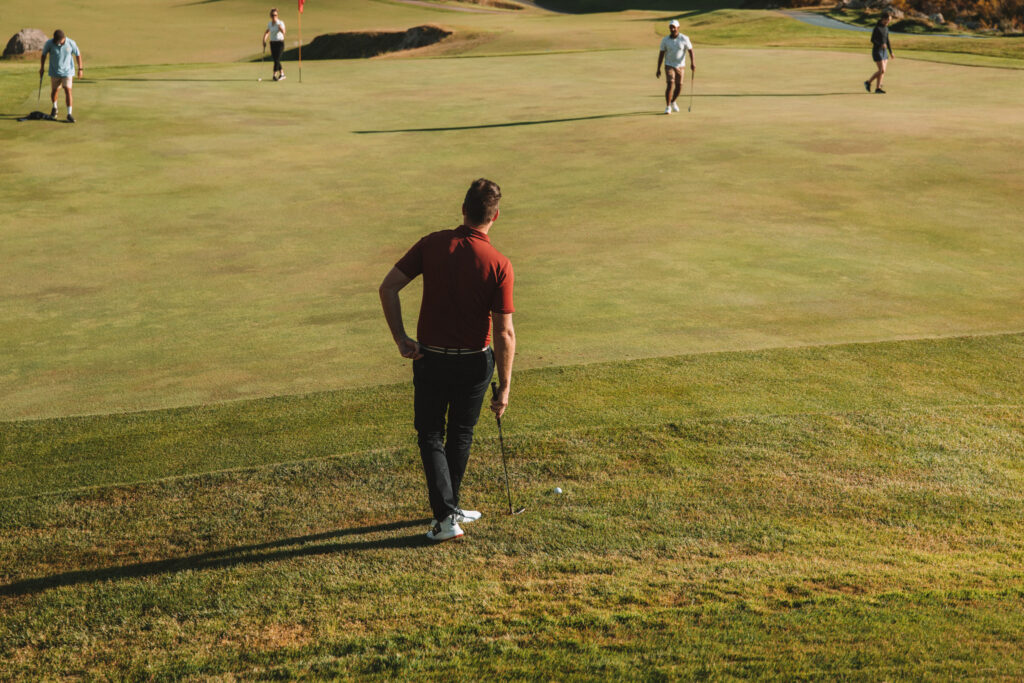
The Real Reason You Chunk Your Chips
Most golfers instinctively try to “help” the ball in the air. That leads to two major problems:
- You lean the shaft too far forward
- You drive the club steeply into the ground
The result? The leading edge digs, the club gets stuck, and the ball travels only a fraction of the intended distance. Even if you don’t chunk it, a digging motion removes forgiveness, your strike has to be perfect, every time.
Great chippers do the opposite. They keep the club shallow, use the bounce, and let the sole of the wedge glide through the turf, not stab into it. It’s not a delicate “handsy” motion, it’s a simple, repeatable technique that makes clean contact almost automatic.
What “Gliding the Club” Actually Means
To glide the club is to let the bottom of the wedge, the bounce, interact with the turf. When you do this, the club:
- Skims the grass instead of digging into it
- Slides under the ball with a predictable launch and rollout
- Forgives small errors in strike
A glide motion essentially widens your margin for error. You can be a little behind the ball and still produce a good shot.
The Bounce: Your Built-In Safety Net
Every wedge has bounce, the slight angle between the leading edge and the trailing edge of the sole. It’s there to prevent digging. But most golfers never let it work, because their setup exposes the sharp leading edge instead of the forgiving bounce.
By adjusting your setup (next section), you expose more of the sole, which makes it possible to glide the club through impact.
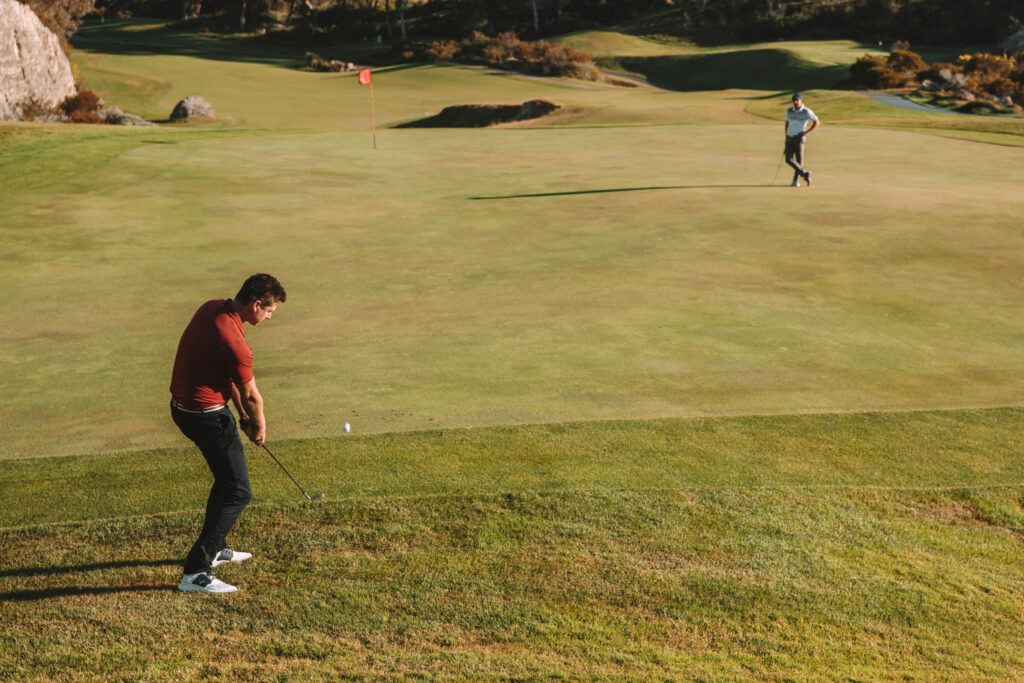
Setup for a Glide (The Fundamentals)
Here’s a simple setup that encourages a shallow, sliding strike:
Ball position: Just forward of center
Weight: Slightly favor the lead foot (60–70%), but not excessively
Shaft lean: Neutral, avoid leaning the shaft too far forward
Grip pressure: Light and relaxed, especially in the trail hand
Wrist action: Quiet and controlled
If you do nothing else, minimizing forward shaft lean will make a massive difference. A neutral shaft allows the bounce to sit underneath the ball, not in front of it.
The Glide Motion: How to Deliver the Club Correctly
The motion itself should feel like you’re brushing the grass, not chopping at it. A few keys:
- Keep your body turning through the shot
- Maintain your posture and height (don’t lift up)
- Let the club “slide,” as if skimming a credit card under the ball
- Match the size of the backswing to the length of the shot
You are not trying to jab, pop, or scoop the ball. Glide has rhythm. Glide has tempo. Glide has flow.
Drills to Train the Glide
1. The Towel Drill
Place a towel a few inches behind the ball. Chip without hitting the towel. This trains a shallow, brush-like strike.
2. Sole-Brush Drill
Without a ball, make repeated chipping swings and listen for a soft “brush” of the turf. No thud. No dig. Just brush.
3. Landing Spot Drill
Pick a landing spot on the green and focus only on getting the ball to land there, using your glide motion. This reinforces feel and touch.
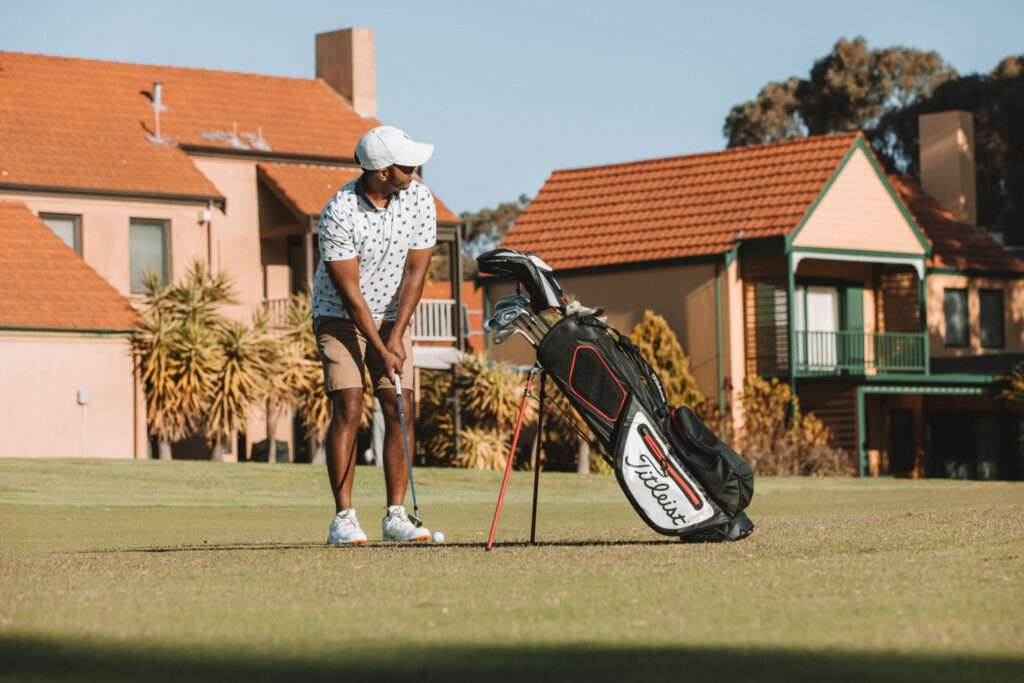
Common Mistakes to Avoid
- Leaning the shaft too far forward
- Stopping your body rotation at impact
- Trying to lift the ball into the air
- Gripping the club too tightly
If you fix just one of these, fix the shaft lean. It is the number-one cause of digging.
When to Use the Glide, and When Not To
This technique is best from clean lies, light rough, and fairway cut around the green. It’s ideal when you want:
- Predictable rollout
- Consistent launch
- A forgiving strike
The only time the glide is less effective is in deep rough or on hardpan tight lies, where you may need a slightly different approach. But for the majority of chip shots, gliding is your highest-percentage option.
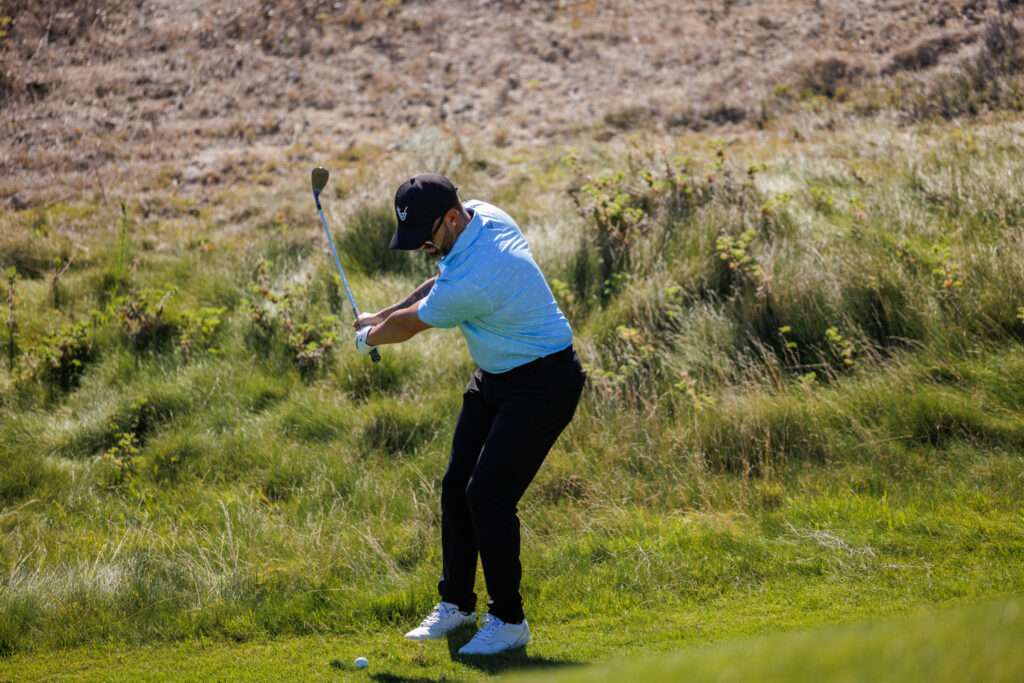
Final Thoughts: Glide Your Way to Consistency
If you want to lower scores quickly, improving your chipping is one of the fastest paths there. By learning to glide instead of dig, you gain:
- More consistent contact
- Better distance control
- Increased confidence around the greens
The wedge is designed to help you, let it do just that. The next time you face a basic chip, quiet your hands, soften your grip, and brush the turf. With a shallower strike and a gliding sole, you’ll soon turn chunked chips into reliable up-and-down chances.

